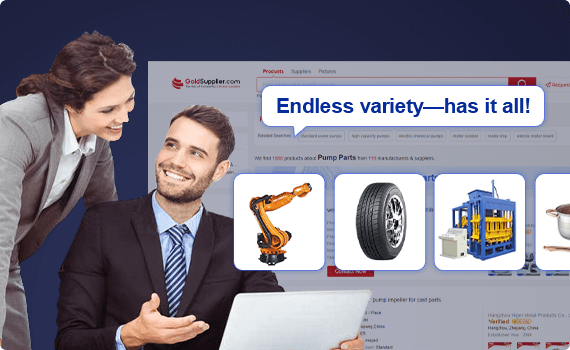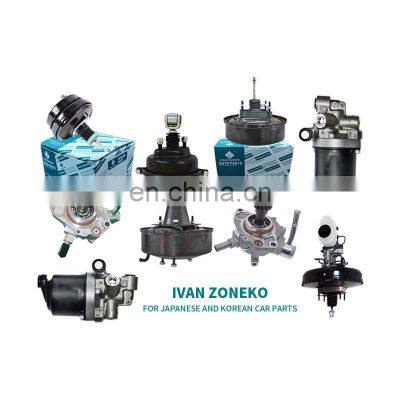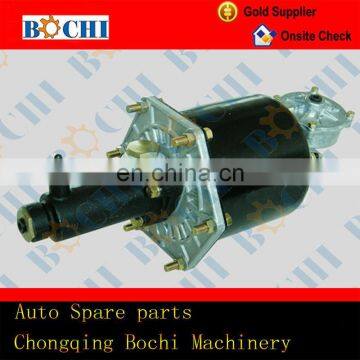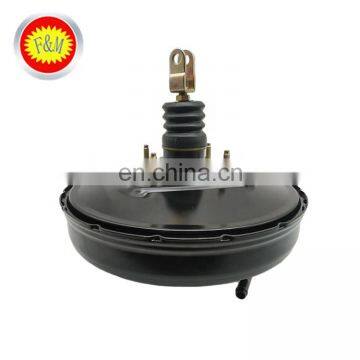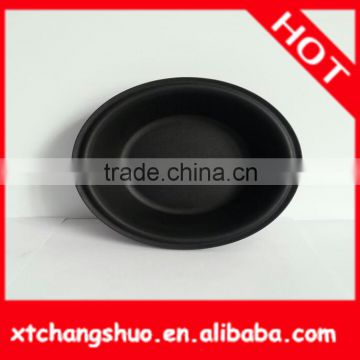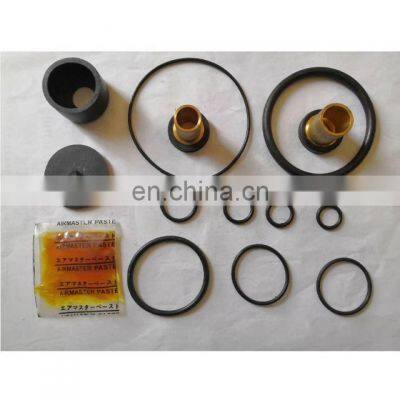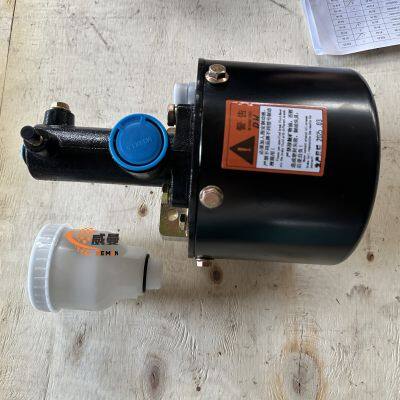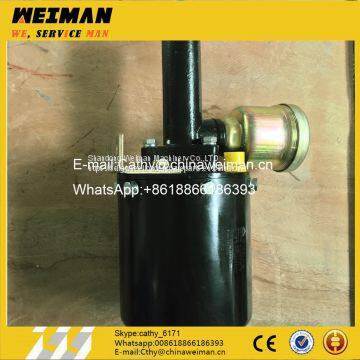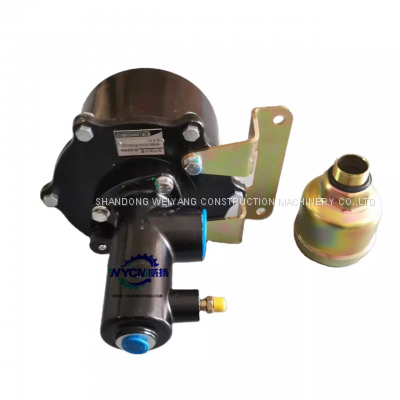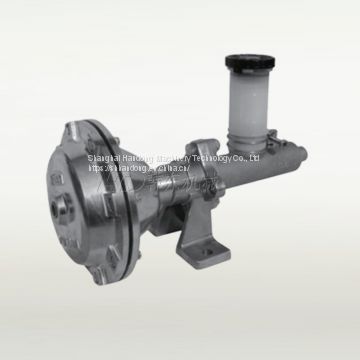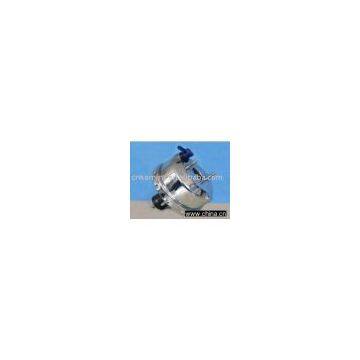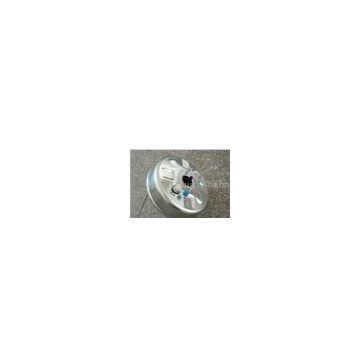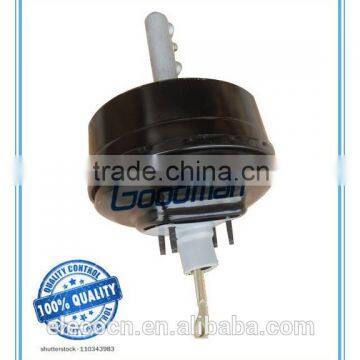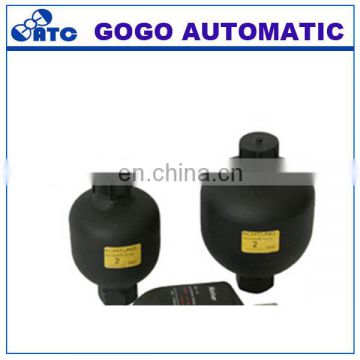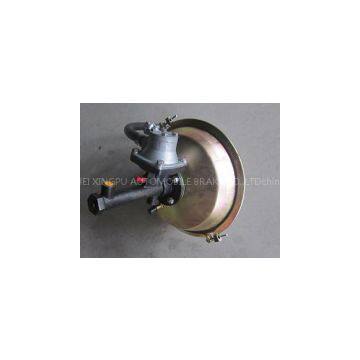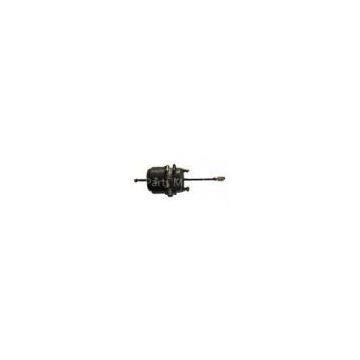brake booster Insights & Buyer's Guide
The complete guide on brake boosters, which improve every automobile's braking system. Understand the usage of brake boosters on cars, trucks, and pickups to make driving easier and safer. This page will walk you through the steps of replacement and maintenance so that your vehicle’s braking system works flawlessly.
What is a Brake Booster and How Does it Work in Your Car?
Brakes are typically engaged with considerable effort, but a well-managed brake booster only makes use of a driver’s light touch. The brake booster power unit utilizes the vehicle’s vacuum to assist the driver’s foot and therefore to enhance the force needed to stop the vehicle. This product considerably improves response time for all transportation, whether private or for hire, while heavily relying on the road network.
How does a power brake booster enhance braking performance?
Brake performance is enhanced by the power brake booster, which uses vacuum pressure to multiply the force applied on the brake pedal. The driver pushing down on the brake pedal engages the booster vacuum, which helps pressurize the master cylinder. The master cylinder sends hydraulic pressure, via brake lines, to the brake discs or drum brakes. This ensures the system operates efficiently and swiftly, enabling the driver to have full command over the vehicle with complete trust.
Understanding the role of the master cylinder in the brake system
The master cylinder is critical in the brake system since it converts the force applied by the brake booster's diaphragm into hydraulic pressure. The hydraulic pressure, in turn, is conveyed via brake fluid in the brake lines to the brake calipers or wheel cylinders. The master cylinder controls the hydraulic pressure applied to the brakes, thereby enabling smooth, controlled braking. Periodic inspections and the maintenance servicing of the master cylinder are essential to prevent leakage as well as enhance performance.
What is the function of the booster vacuum in a vehicle?
For the power brake booster to function properly, the booster vacuum must be operational. It provides the booster with the required vacuum pressure needed to further amplify the force exerted on the brake pedal. The engine’s intake manifold or a separate vacuum pump accomplishes this work. The system permits gas to flow in and out of the booster to ensure a sufficient vacuum for brake assist. The maintenance of the vacuum hose and check valve is critical to avoiding leaks while sustaining reliable function.
Signs of a Bad Brake Booster: When to Consider Replacement
Understanding the signs associated with a malfunctioning brake booster is important for keeping your car safe. Symptoms of a failing brake booster include a stiff brake pedal, longer than normal stopping distances, and a hissing sound upon the release of the brake pedal. These symptoms suggest that there may be a loss in the assistant vacuum, which would greatly reduce the vehicle's braking power. It is necessary to replace a faulty brake booster promptly to prevent damage to the vehicle's brake system.
How to identify symptoms of brake booster failure
Identifying symptoms of a malfunctioning brake booster can aid in timely mitigation. Some of the symptoms are: a spongy or stiff brake pedal, weak braking, and strange auditory signals accompanying brake application. These symptomatic issues might mean that the diaphragm located inside the booster is ruptured or that there is damage to the vacuum line. Consistent inspections and maintenance can detect these problems in advance, before the possibility of total collapse of the brakes.
What causes a brake booster to fail in an auto?
Brake boosters are very important in making an automobile's brake system function properly. Failure to fix some of the problems with a brake booster might lead to a broken diaphragm, fractures on the vacuum hose, or malfunction of the check valve. Furthermore, a blocked brake pump might impede the loss of brake fluid, which may, in turn, break the booster vacuum. With proper maintenance, any malfunction can be detected early enough, and the lifespan of the whole braking system can be extended.
How does a faulty diaphragm affect the power brake booster?
The diaphragm in a power brake booster is very important for the unit's operation. If the diaphragm is found to be faulty, it can cause a loss in the vacuum pressure, which will make the brake pedal hard to push and brake performance significantly reduced. This problem may also allow air to enter the system, thus further reducing the effectiveness of the booster. To ensure the safe operation of the brakes and effective performance, a damaged diaphragm must be replaced.
How to Replace a Brake Booster: A Step-by-Step Guide
As with all other vehicular works, replacing a brake booster comes with its own set of challenges, including the requirement to have specialized tools and, in some cases, expert assistance. Tools needed for this particular task are gun cabinets, a set of wrenches, vacuum suction, a shoeing and caping knife, as well as brake fluid. The procedure consists of releasing the old vacuum booster, checking the master cylinder, and mounting the power brake booster. There is always the possibility that something may go wrong. In this case, the chances are numerous of grappling with leak-proof fasteners.
What tools are needed for brake booster replacement in a vehicle?
To carry out the task of replacing a brake booster in a vehicle, specific apparatus is necessary, which includes: a complete set of wrenches, pliers, and a vacuum gauge. Moreover, a brake fluid collection kit as well as a hydraulic jack would prove to be useful. To ensure safe operations concerning the removal of the old booster and installation of the new one, these tools are critical. Moreover, the tools are essential for safely removing the old booster and installing the new one while ensuring that the brake system does not leak or malfunction.
How to safely remove and install a new power brake booster
The vacuum booster for the power brake system may require careful removal and installation. Start by disconnecting the brake lines and vacuum hoses from the old booster. The mounting bolts are to be removed carefully. Inspect the master cylinder for wear or leaks before placing the new booster on. Subsequently, all required connections are made, supply the booster to its proper place, fasten the vacuum and brake lines to the booster, and check all fittings to make sure there are no leaks.
Why is it important to check the master cylinder during replacement?
The importance of checking the master cylinder when replacing a brake booster is that it contributes to the proper functioning of the entire brake system. The master cylinder serves the critical task of hydraulic pressure distribution, therefore, leaks or any other failure could jeopardize the system. Working on the master with the booster helps avoid additional problems and improves braking in the future.
Choosing the Right Replacement: OEM vs. Aftermarket Brake Boosters
Identifying the differences between an OEM and an aftermarket option is crucial when choosing a brake booster. OEM brake boosters are crafted for a specific vehicle make and model. This ensures that it will give the required performance and fit well with the vehicle. Aftermarket boosters have less restrictive selection criteria; they can provide additional features to consumers at a reasonable price. Both have their pros and cons, which depend on requirements and spending capabilities.
What are the benefits of using an aftermarket brake booster?
Aftermarket boosters come with several options and are usually more affordable than their counterparts. The aftermarket boosters come with additional benefits, too, like better materials and greater durability. In specific scenarios, readily accessible aftermarket boosters may even outperform their primary counterparts. Nevertheless, aftermarket boosters' compatibility with the vehicle must be checked before installation to avoid complications.
How to ensure compatibility with your car or truck
When selecting a brake booster for your car or truck, ensuring compatibility is important for proper fit and function. The specifications of the booster should be checked against your vehicle's make, model, and year. Also, ask an auto parts dealer or your vehicle’s manufacturer for compatibility confirmation. If the booster and the specs of your vehicle are accurately matched, the brake system works safely and effectively.
Understanding the difference between vacuum and hydro-boost systems
Choosing the right brake booster requires knowing the differences between vacuum and hydro-boost systems. While vacuum boosters take the engine’s vacuum pressure to facilitate braking, hydro-boost systems use hydraulic pressure from the power steering pump. Each system has its pros and cons; for example, standard vehicles predominantly use vacuum boosters, while hydro-boost systems excel in performance for larger vehicles such as trucks and SUVs.
Maintenance Tips for a Long-Lasting Brake Booster
Supercharging the lifespan of your brake booster always requires regular maintenance. This includes the inspection of the vacuum pump and hoses for any possible leaks, checks of the check valve, and overall basic maintenance of the brake fluid levels. Following these practices will mitigate the chances of booster vacuum leaks, thus maintaining the overall condition of the brake system and its safety and reliability features.
How often should you inspect the vacuum pump and hoses?
Checking the vacuum pump and hoses is important to shed coaches regularly, using check valves and preventing leaks, and keeping the brake booster functional. These are preventative checks done every six months or during servicing. Check the hoses for wear, cracks, and damage, and check that the vacuum pump is operational. Regular inspections help to mitigate issues earlier, which helps save on repairs while ensuring braking safety.
What are the best practices for maintaining the brake system?
Best practices for maintaining brake systems include, but aren't limited to, checking the brake fluid level, hoses, and the master cylinder. Make sure all parts are leak-free, the brake fluid is within acceptable levels, and all components are functioning properly. Confirm the brake pads and the brake discs are not worn and replace them when needed. These optimized methods will help maintain the braking performance while prolonging the life of the brake booster.
How does regular maintenance prevent booster vacuum leaks?
Regular check-ups will help you reduce the chances of developing a vacuum leak, which impacts the performance of the brake booster. Preventative maintenance entails checking the vacuum hose, check valve, and the associated connections to ensure no leaks are developing, which could harm the braking system. Additionally, proper maintenance of seals and components will ensure that the brake booster functions to maintain the proper vacuum pressure needed for effective braking. Regular maintenance not only enhances the prevention of vacuum leaks but also improves the reliability of your vehicle's brakes.
Frequently Asked Questions (FAQs)
Q: What is a brake booster, and what is its function?
A: The amplification of the vacuum pressure produced by the engine with the force executed on the brake pedal is achieved with a device called a brake booster. With this arrangement, it becomes easy for the vehicle to stop. He uses a diaphragm that serves to separate vacuum and atmospheric pressure as a brake pedal and master cylinder interface. Along with this arrangement, it also sits in between the brake pedal and the master cyclinder.
Q: What tells me your vehicle’s brake booster requires replacement?
A: A faulty brake booster means that a heavily stiff brake pedal, a distance greater than usual for a vehicle to stop, and a hissing sound each time the pedal is not engaged are present. Under normal circumstances, these symptoms are indicative of a lot more difficulty than usual while braking.
Q: Is it possible for a vehicle running on diesel to utilize a vacuum booster?
A: This kind of vehicles hardly produces a vacuum from the engine itself which is why they are fitted with a hydraulic booster instead of a vacuum. Hydraulic brakes do provide what they promise, the use of hydraulic fluid to enhance the pressures in he braking system.
Q: What is the purpose of the piston in a brake booster?
A: The piston within the brake booster is responsible for relaying the pressure from the brake pedal to the master cylinder. The booster is capable of increasing the amount of force that is applied which makes it easier to stop the vehicle. This is done by the piston moving when the brake pedal is pushed down.
Q: What is the effect of a brake booster on disc brakes?
A: A brake booster further improves the operation of a disc brake by making sure there is adequate power to the brake pedal. This technological advancement guarantees that the brake pads will properly clamp down on the rotors so that effective braking action will occur.
Q: What would be the problem if there is insufficient vacuum in the brake booster?
A: The vehicle will experience inefficient braking without the appropriate level of vacuum in the brake booster. The lack of a vacuum means curb appeal will not assist in providing the required boost, thereby resulting in a stiff brake pedal and more effort needed to decelerate the vehicle.
Q: Is it possible to operate a vehicle with a bad brake booster?
A: A vehicle does not have to be operational and under brake load to recognize that the brakes are faulty. Reduced braking efficiency and increased stopping distances will be the result, and thus, it is highly baffling if such a ride is attempted on public roads.
Q: Why does outside air interact with the brake booster?
A: The nature of mechanical systems dictates that they have to be balanced with counterforces. In essence, outside air is used as a counterforce to stabilize pressure on one end of the brake booster diaphragm. During the release stage of braking, outside air is drawn in, thus allowing the booster to reset, making it ready for the next application of brakes.
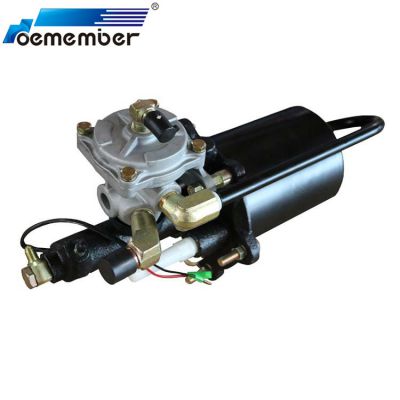 OE Member MC815305 Air brake booster for MitsubishiNegotiableMOQ: 1HS Electrical Technology Co,LTD3 YRS
OE Member MC815305 Air brake booster for MitsubishiNegotiableMOQ: 1HS Electrical Technology Co,LTD3 YRS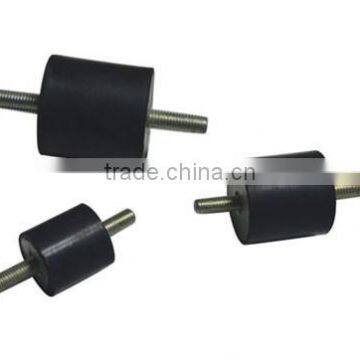 brake boosterUS$ 0.05 - 0.5MOQ: 1000 PiecesRizhao Lanshan Yongsheng Rubber & Plastic Co., Ltd.5 YRS
brake boosterUS$ 0.05 - 0.5MOQ: 1000 PiecesRizhao Lanshan Yongsheng Rubber & Plastic Co., Ltd.5 YRS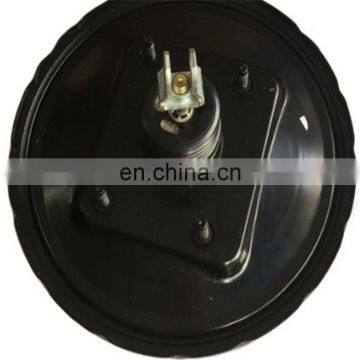 brake booster repair kit brake booster OEM 44610-26431US$ 16 - 49MOQ: 10 SetsDodge Auto Parts Fuel Injector Trade Co., Ltd.5 YRS
brake booster repair kit brake booster OEM 44610-26431US$ 16 - 49MOQ: 10 SetsDodge Auto Parts Fuel Injector Trade Co., Ltd.5 YRS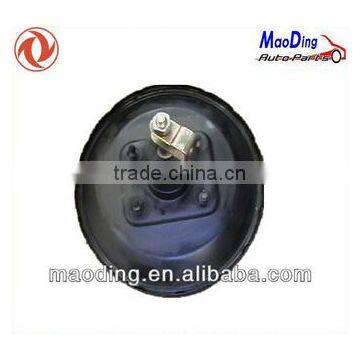 Dongfeng brake booster spare partsUS$ 19 - 22MOQ: 1 PieceHangzhou Maoding Auto Parts Co., Ltd.5 YRS
Dongfeng brake booster spare partsUS$ 19 - 22MOQ: 1 PieceHangzhou Maoding Auto Parts Co., Ltd.5 YRS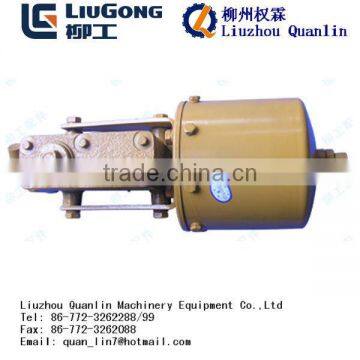 brake booster Pump For Liugong Spare PartsUS$ 1 - 1,000MOQ: 1 PieceLiuzhou Quanlin Construction Machinery Co., Ltd.5 YRS
brake booster Pump For Liugong Spare PartsUS$ 1 - 1,000MOQ: 1 PieceLiuzhou Quanlin Construction Machinery Co., Ltd.5 YRS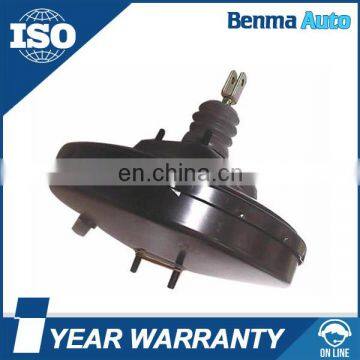 8" brake booster 47210-21G11 vacuum booster for Japanese carUS$ 10 - 25MOQ: 100 PiecesHuangshan Benma Group Co., Ltd.5 YRS
8" brake booster 47210-21G11 vacuum booster for Japanese carUS$ 10 - 25MOQ: 100 PiecesHuangshan Benma Group Co., Ltd.5 YRS Belarus tractor reliable performance brake booster repair kitUS$ 2 - 12.3MOQ: 50 PiecesXingtai Haoheng Trading Co., Ltd.5 YRS
Belarus tractor reliable performance brake booster repair kitUS$ 2 - 12.3MOQ: 50 PiecesXingtai Haoheng Trading Co., Ltd.5 YRS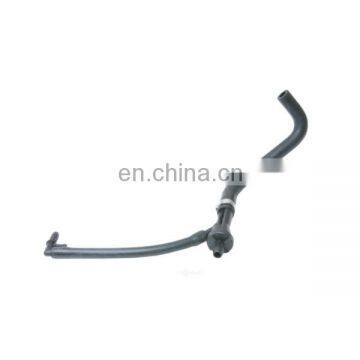 Power brake booster Vacuum Valve For For BMW E46 E39 11617545382 11617503621US$ 5 - 20MOQ: 100 PiecesSuzhou Qqqpet Electronic Technology Co., Ltd.5 YRS
Power brake booster Vacuum Valve For For BMW E46 E39 11617545382 11617503621US$ 5 - 20MOQ: 100 PiecesSuzhou Qqqpet Electronic Technology Co., Ltd.5 YRS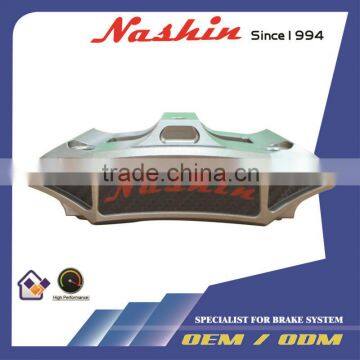 Nashin auto parts, auto spare parts, brake boosterUS$ 10 - 2,000MOQ: 1 SetWINDFLOWERS TECHNOLOGY CO., LTD.5 YRS
Nashin auto parts, auto spare parts, brake boosterUS$ 10 - 2,000MOQ: 1 SetWINDFLOWERS TECHNOLOGY CO., LTD.5 YRS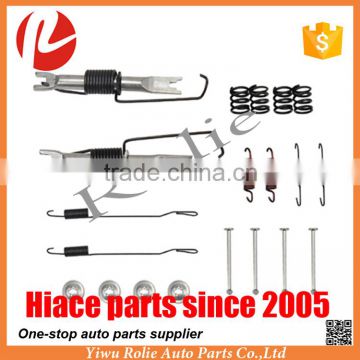 Toyota RegiusAce hiace OEM 47061-08030 caliper brake booster repair kitUS$ 6 - 15MOQ: 30 SetsYiwu Rolie Auto Parts Co., Ltd.5 YRS
Toyota RegiusAce hiace OEM 47061-08030 caliper brake booster repair kitUS$ 6 - 15MOQ: 30 SetsYiwu Rolie Auto Parts Co., Ltd.5 YRS Auto Spare Parts Brake Master Booster Repair Kit 44201-EB360 For BT-50US$ 6 - 7.5MOQ: 2 PiecesGuangzhou Fengming Auto Parts Co., Ltd5 YRS
Auto Spare Parts Brake Master Booster Repair Kit 44201-EB360 For BT-50US$ 6 - 7.5MOQ: 2 PiecesGuangzhou Fengming Auto Parts Co., Ltd5 YRS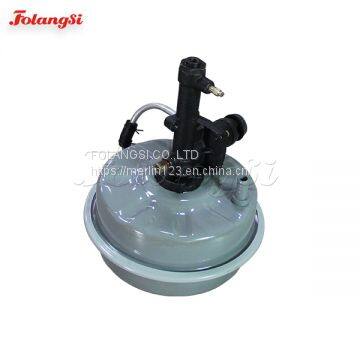 Forklift Parts brake booster Assy used for CPCD50-100 (A-BP11-800A-0277A)US$ 23 - 74MOQ: 1 PieceFOLANGSI CO.,LTD
Forklift Parts brake booster Assy used for CPCD50-100 (A-BP11-800A-0277A)US$ 23 - 74MOQ: 1 PieceFOLANGSI CO.,LTD brake fluid for brake boosterUS$ 0.4 - 1.5MOQ: 10000 BarrelsJinhua Gafle Auto Maintenance Supplies Plant
brake fluid for brake boosterUS$ 0.4 - 1.5MOQ: 10000 BarrelsJinhua Gafle Auto Maintenance Supplies Plant brake drum brake boosterUS$ 1.5 - 2.9MOQ: 1000 PiecesYantai Huazhonghua Sealing Material Co., Ltd.
brake drum brake boosterUS$ 1.5 - 2.9MOQ: 1000 PiecesYantai Huazhonghua Sealing Material Co., Ltd.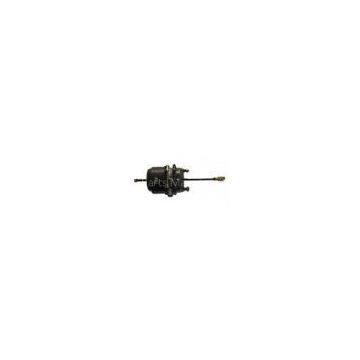 160mm Trailer brake boosterNegotiableMOQ: 1 KilogramSuzhou Guohua Auto Parts Manufacturing Co., Ltd.
160mm Trailer brake boosterNegotiableMOQ: 1 KilogramSuzhou Guohua Auto Parts Manufacturing Co., Ltd.
